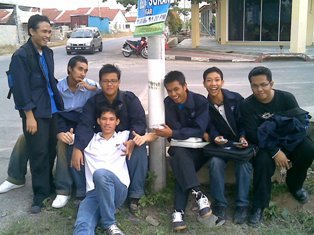

History of video conferencing
Videoconferencing uses telecommunications of audio and video to bring people at different sites together for a meeting. This can be as simple as a conversation between two people in private offices (point-to-point) or involve several sites (multi-point) with more than one person in large rooms at different sites. Besides the audio and visual transmission of people, videoconferencing can be used to share documents, computer-displayed information, and whiteboards.
Simple analog videoconferences could be established as early as the invention of the television. Such videoconferencing systems consisted of two closed-circuit televisionsystems connected via cable. During the first manned space flight, NASA used two radiofrequency (UHF or VHF) links, one in each direction. TV channels routinely use this kind of videoconferencing when reporting from distant locations, for instance. Then mobile links to satelittes using special trucks became rather common.
This technique was very expensive, though, and could not be used for more mundane applications, such as telemedicine, distance education, business meetings, and so on, particularly in long-distance applications. Attempts at using normal telephony networks to transmit slow-scan video, such as the first systems developed by AT &T, failed mostly due to the poor picture quality and the lack of efficient video compression techniques. The greater 1 MHz bandwidth and 6 Mbit/s bit rate of Picturephone in the 1970s also did not cause the service to prosper.
It was only in the 1980s that digital telephony transmission networks became possible, such as ISDN, assuring a minimum bit rate (usually 128 kilobits/s) for compressed video and audio transmission. The first dedicated systems, such as those manufactured by pioneering VTC firms, like PictureTel, started to appear in the market as ISDN networks were expanding throughout the world. Video teleconference systems throughout the 1990s rapidly evolved from highly expensive proprietary equipment, software and network requirements to standards based technology that is readily available to the general public at a reasonable cost. Finally, in the 1990s, IP (Internet Protocol) based videoconferencing became possible, and more efficient video compression technologies were developed, permitting desktop, or personal computer (PC)-based videoconferencing. In 1992 CU-SeeMe was developed at Cornell by Tim Dorcey et al., IVS was designed at INRIA, VTC arrived to the masses and free services, web plugins and software, such as NetMeeting, MSN Messenger, Yahoo Messesnger, Sight Speed, Skype and others brought cheap, albeit low-quality, VTC.
ICT application in video conferencing
ABSTRACT
A decade ago the use of computers as a teaching and learning tool was limited. Teachers used personal computers (PCs) to prepare or store lecture notes, create databases for exam questions or keep up with administrative matters that were formerly handled by a faculty secretary. A modest PC coupled to a small camera can do the job of a sophisticated video-conferencing facility. The revolution in PC development and the Internet is matched by related developments in other forms of information communication technology (ICT), including mobile telephones. Already these can send and receive text and able to access the Internet. This paper is based on learning engineering education from the web such as mathematics, physics, chemistry, programming, and the subject related to engineering. Our group discusses the impact of information communication technology (ICT) on the provision of engineering education and cites the course as an example of how it can be used at the subject level. The course employed ICT in a number of different ways. The introductory part of the course was held in a specially designed video-conferencing facility that had a range of ICT capabilities. The design of the room is to provide students in the room to access the learning process via video-conferencing. ICT is a powerful tool for teaching and learning, deliver and assess information for the students. An ICT-based course merely means that teaching and learning practices are disseminated more widely and more quickly. On the basis of our evaluation we propose a set of example that can be used to evaluate the best use of ICT in engineering education.
INTRODUCTION
This briefing paper has been written to provide an introduction to video conferencing, the technologies behind it, current hardware and software and the likely impact video conferencing will have on the higher education community in the near future. It draws heavily on a number of reports on video conferencing written as part of the Support Initiative for Multimedia Applications project.
Video conferencing has been around for sometime, and is now gaining in popularity. It cannot replace person to person completely, but in many situations being able to see and hear remote co-workers, does improve communication and cut down on travel time and costs.
Video conferencing provides students with the opportunity to learn by participating in a 2-way communication platform. Furthermore, teachers and lecturers from all over the world can be brought to classes in remote or otherwise isolated places. Students from diverse communities and backgrounds can come together to learn about one another. Students are able to explore, communicate, analyze and share information and ideas with one another. Through videoconferencing students can visit another part of the world to speak with others, visit a zoo, a museum and so on, to learn. These "virtual field trips" (see history of virtual learning environments) can bring opportunities to children, especially those in geographically isolated or the economically disadvantaged. Small schools can use this technology to pool resources and teach courses (such as foreign languages) which otherwise couldn't be offered.
Such courses are offered via the Internet and use a range of ICT platforms including e-mail, news groups, synchronous and asynchronous text and video-conferencing. Their courses are often managed using software such as Blackboard that allows individual teachers or course teams to post messages and grades and gives students access to course notes, results, notices and discussion forums.
We refer to learner-centered education in this context from an organizational rather than a pedagogical standpoint. Students may design degrees for themselves from a smorgasbord of Internet courses but the content of the courses remains teacher centered and directed. This is an example of how easy it is to confuse technological innovation with pedagogical innovation. Transferring a badly designed, badly written and badly assessed course to the Internet does not make it pedagogically better. Such a paradigm shift in the organization of educational provision suits government and big business. Both government and industry hope to save large amounts of money on infrastructure costs by making education and training available online. They have commandeered the concept of lifelong learning because they realize that in a rapidly changing economy workers must be able constantly to retrain if they are to stay employable.
Team Metal



